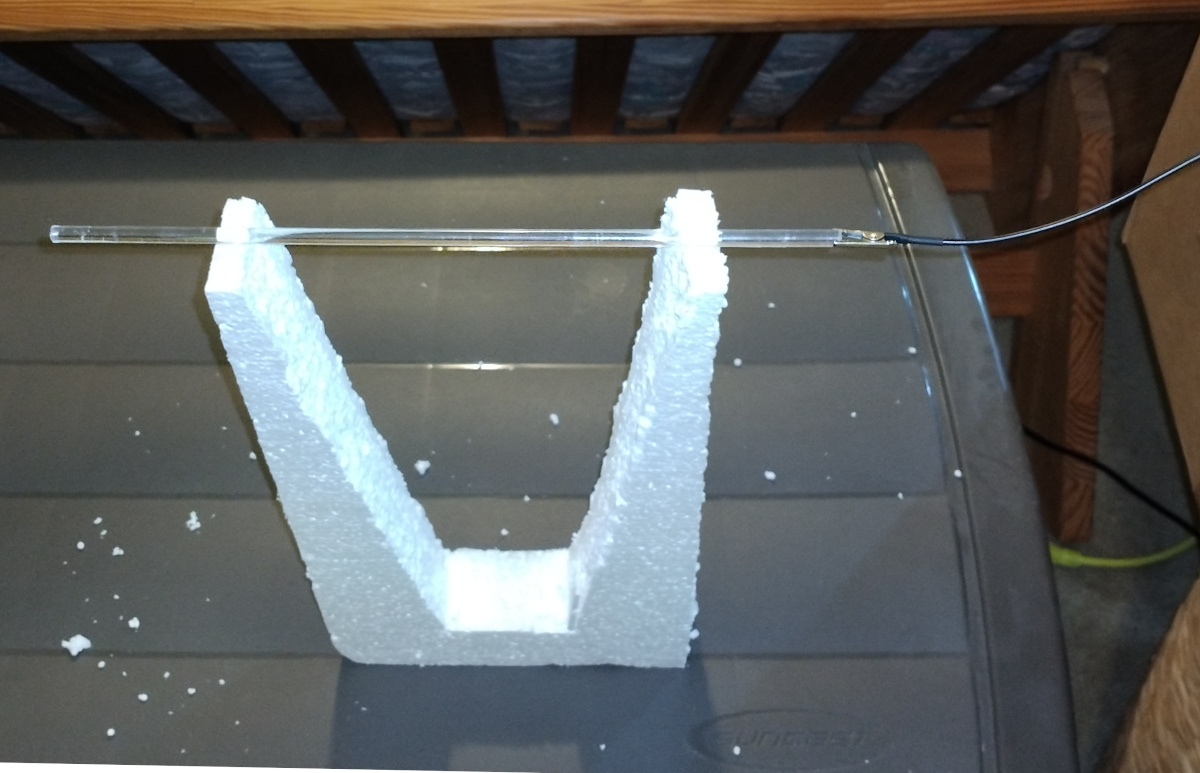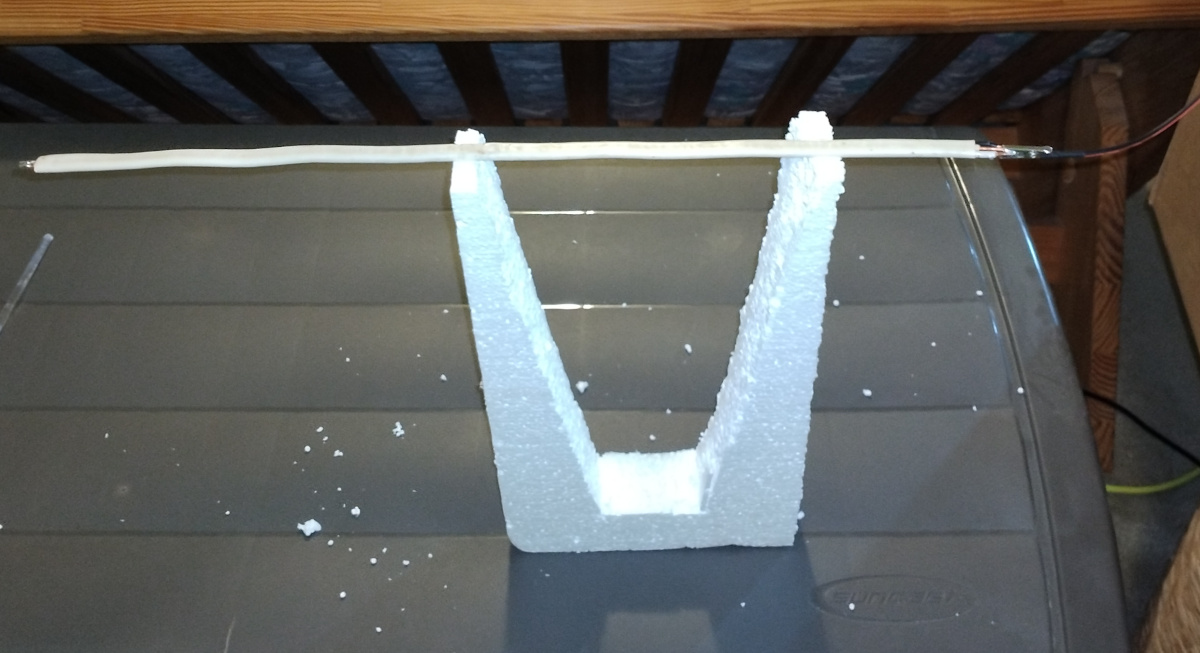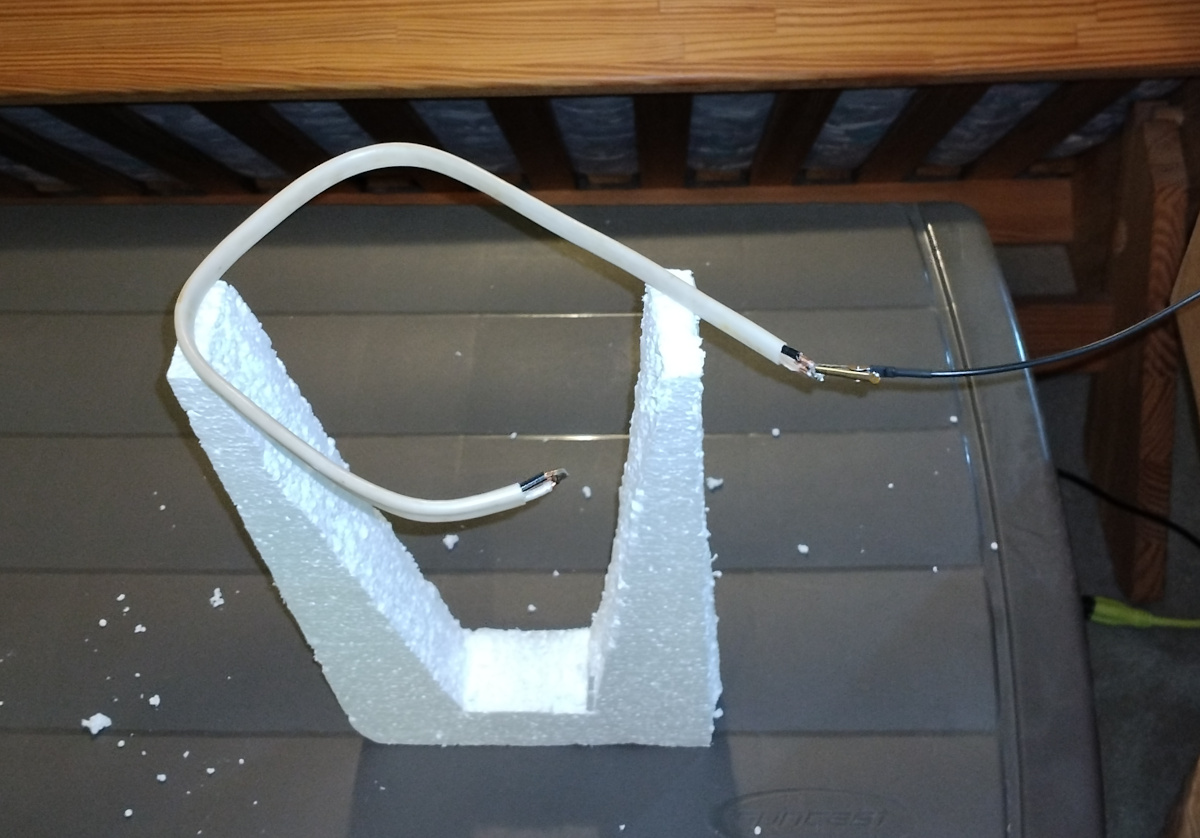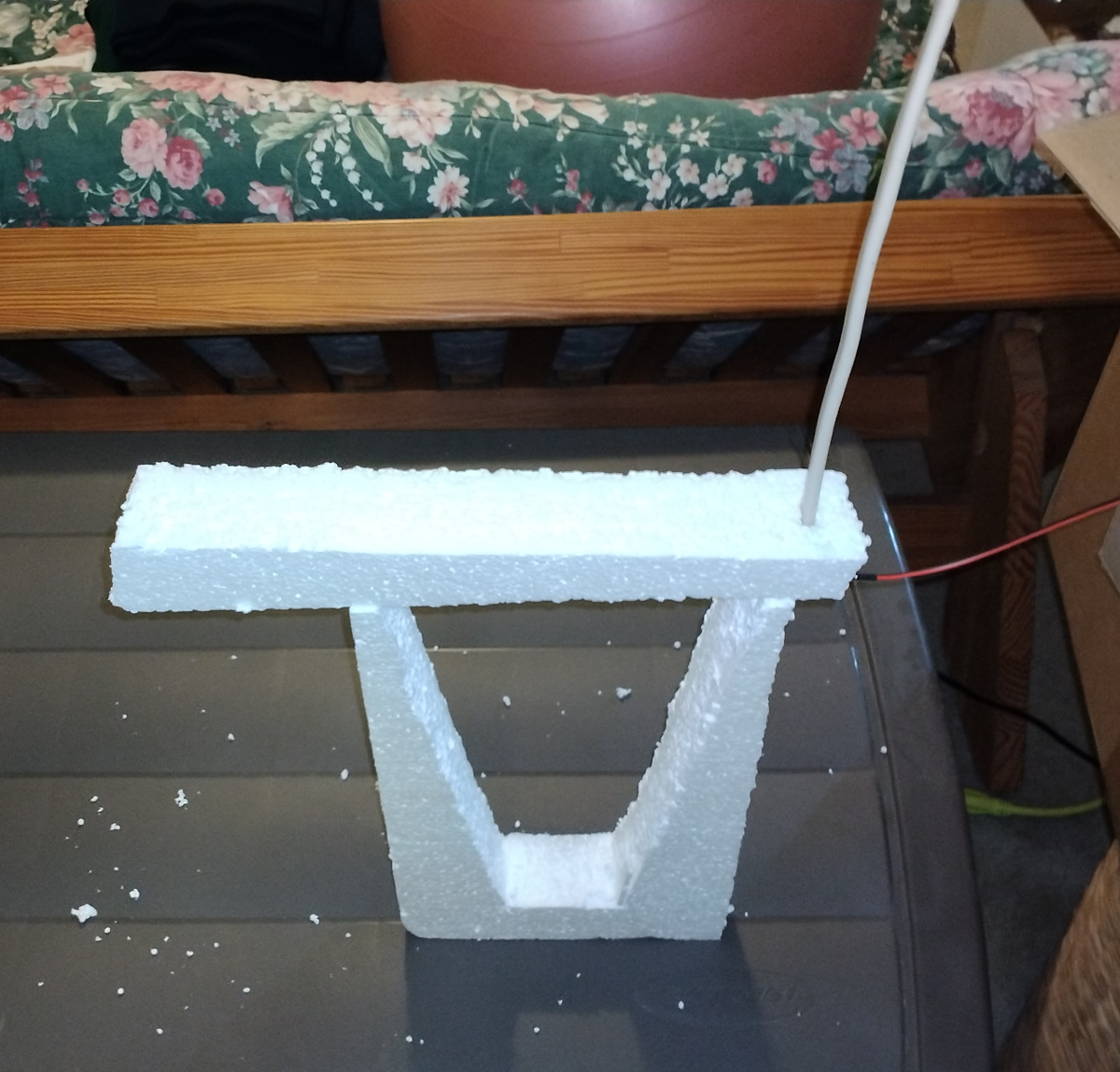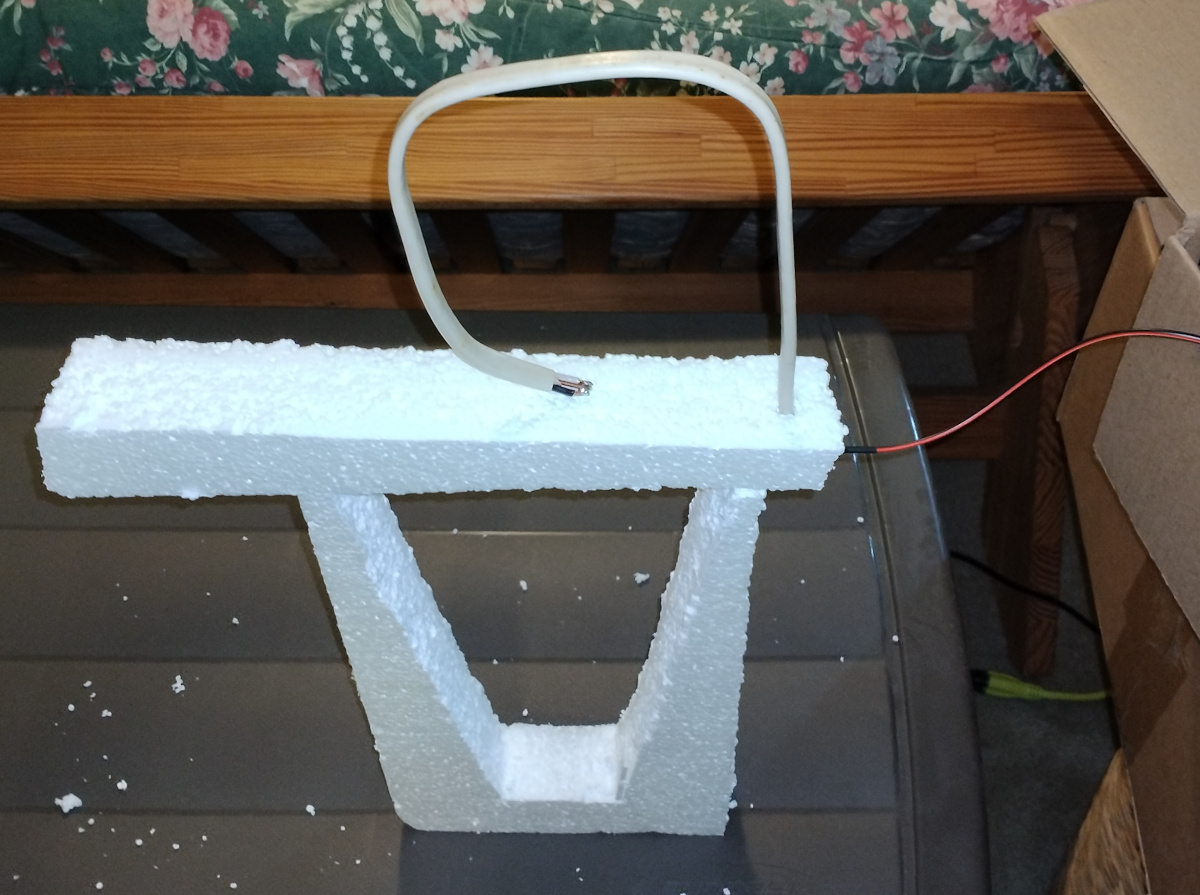"4) Two small-diameter conductors (small diameter relative to their spacing) will each be less influenced by their neighbor than if larger diameter conductors are used. Consequently the volume loop of picture 3 will electrically look more like a straight wire lying completely over plastic with very little loop effect caused by the folded back section influencing the other side. Larger diameter conductors or a tighter loop should begin to show more of the capacitance-decreasing effect due adjacent common-mode E-fields that I was describing in our email." - pitts8rh
Thanks! #1 thru #3 I get. I was going more for qualitative than quantitative, but point taken. Presumably I could hang the antennas from the ceiling with string and get more accurate results. I was expecting the horizontal rod to have more intrinsic just due to more of it being closer to the ground, and that seems to be the case. The curve having less intrinsic was a bit of a surprise, because I figured it would have more effective area than a rod, though perhaps closing the loop conductively would accomplish this?
But I'm not sure I completely understand #4? There are three conductors in 12/2 wire and they're spaced pretty closely. Would it help if I soldered them all together on both ends? Or should I introduce even more in the way of intermediate shorts? My intuition of electrical fields (largely sans the magnetic component) is that they are fairly mushy things, with a lot of blurring together at the detail level due to the general lack of directionality, but there could certainly be more nuance going on.
[ALSO] My rationale for why the above results are largely valid is the same as for why insulated antennas differ imperceptibly from uninsulated: the insulation comprises so little of the overall air dielectric that the effect is negligible. Much longer antennas would behave more inductively, and then a nearby insulator could increase the self C, but these are so short compared to the wavelength that they're effectively just capacitive plates. All of this to a first order, and as in all things physics one should trust but verify. I'll give it a bit more meticulous shot tomorrow.


